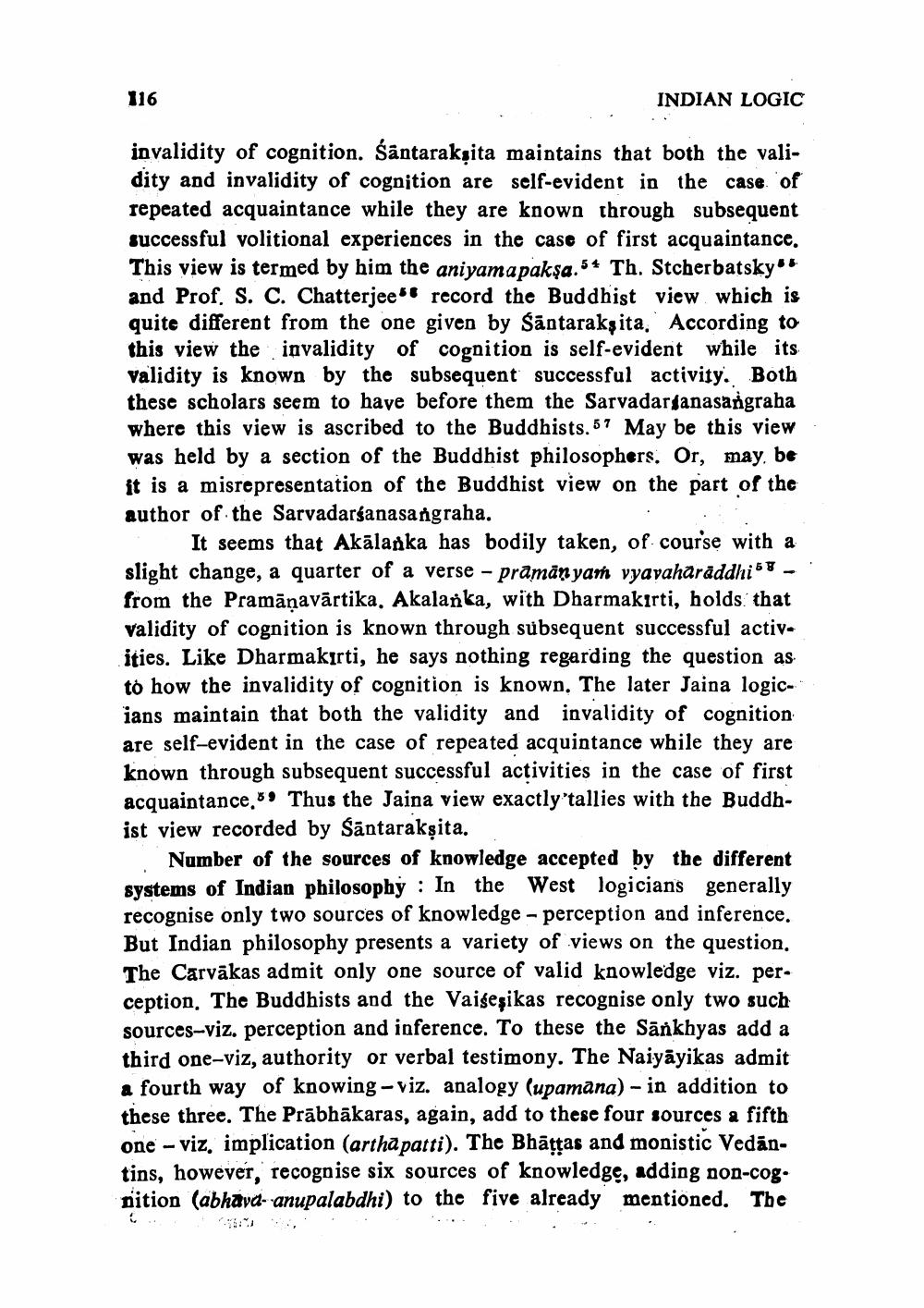________________
116
INDIAN LOGIC
invalidity of cognition. Śäntarakṣita maintains that both the validity and invalidity of cognition are self-evident in the case of repeated acquaintance while they are known through subsequent successful volitional experiences in the case of first acquaintance. This view is termed by him the aniyamapakşa.54 Th. Stcherbatsky". and Prof. S. C. Chatterjee" record the Buddhist view which is quite different from the one given by śāntarakṣita. According to this view the invalidity of cognition is self-evident while its Validity is known by the subsequent successful activity. Both these scholars seem to have before them the Sarvadarganasangraha where this view is ascribed to the Buddhists.57 May be this view. was held by a section of the Buddhist philosophers. Or, may be it is a misrepresentation of the Buddhist view on the part of the author of the Sarvadarganasangraha.
It seems that Akālaska has bodily taken, of course with a slight change, a quarter of a verse - prāmān ya vyavahäräddhi 68 from the Pramānavārtika. Akalanka, with Dharmakirti, holds that validity of cognition is known through subsequent successful active ities. Like Dharmakurti, he says nothing regarding the question as to how the invalidity of cognition is known. The later Jaina logicians maintain that both the validity and invalidity of cognition are self-evident in the case of repeated acquintance while they are known through subsequent successful activities in the case of first acquaintance.59 Thus the Jaina view exactly'tallies with the Buddhist view recorded by śāntarakṣita.
Number of the sources of knowledge accepted by the different systems of Indian philosophy : In the West logicians generally recognise only two sources of knowledge - perception and inference. But Indian philosophy presents a variety of views on the question, The Carvākas admit only one source of valid knowledge viz. per. ception. The Buddhists and the Vaigeşikas recognise only two such sources-viz. perception and inference. To these the Sānkhyas add a third one-viz, authority or verbal testimony. The Naiyāyikas admit a fourth way of knowing - viz. analogy (upamana) - in addition to these three. The Prābhākaras, again, add to these four sources a fifth one – viz, implication (artha patti). The Bhātas and monistic Vedāntins, however, recognise six sources of knowledgę, adding non-cog. nition (abhava-anupalabdhi) to the five already mentioned. The




